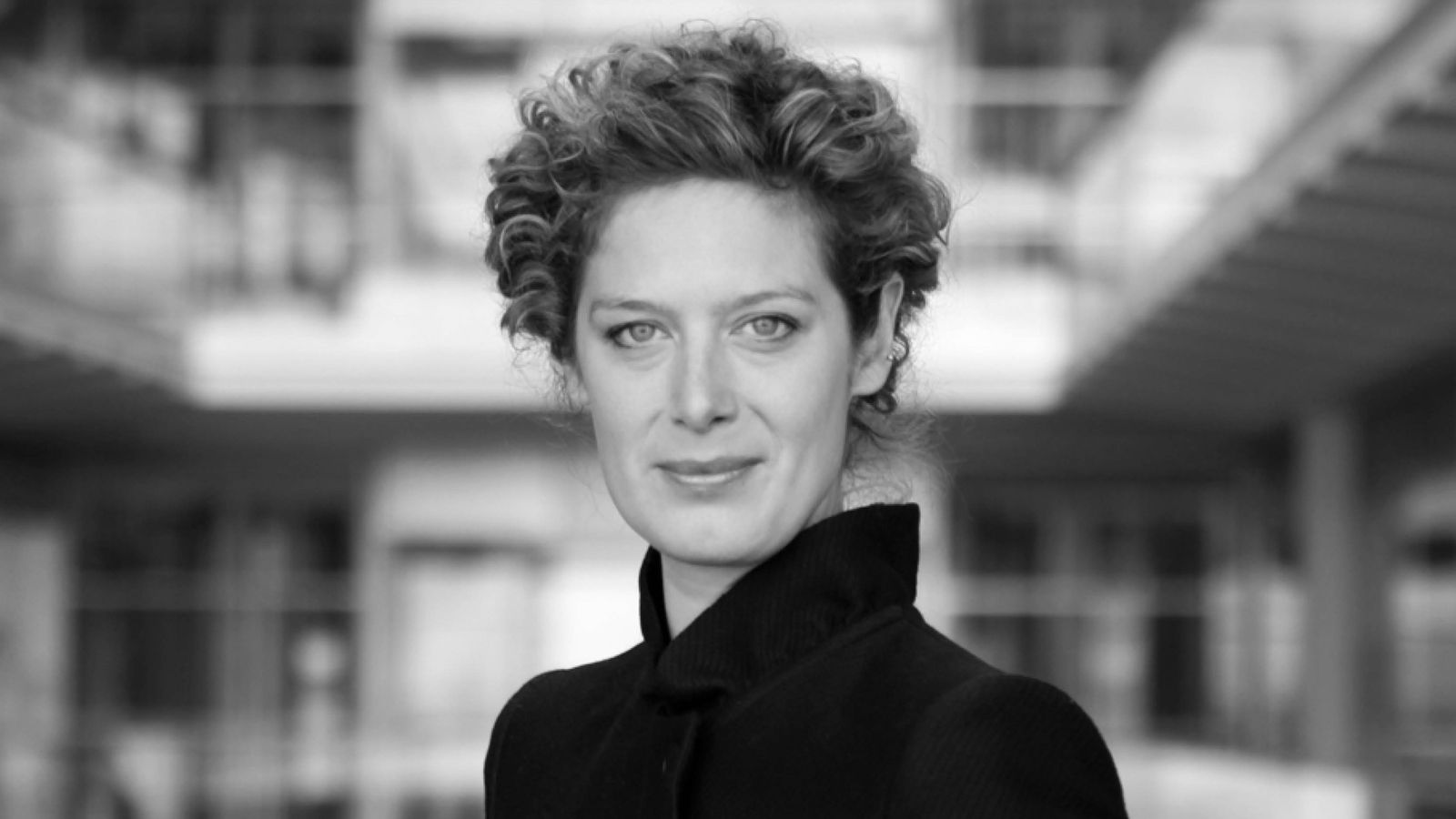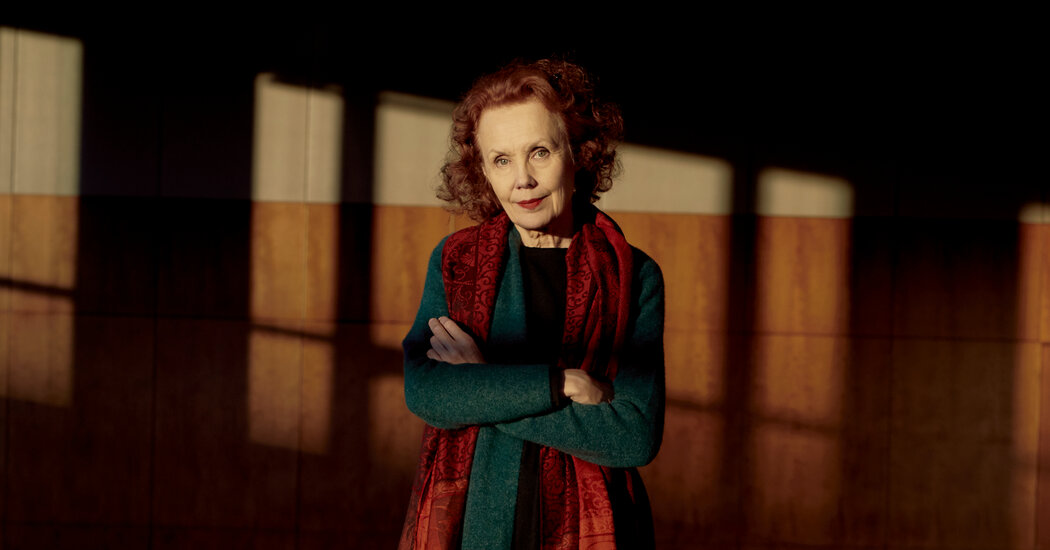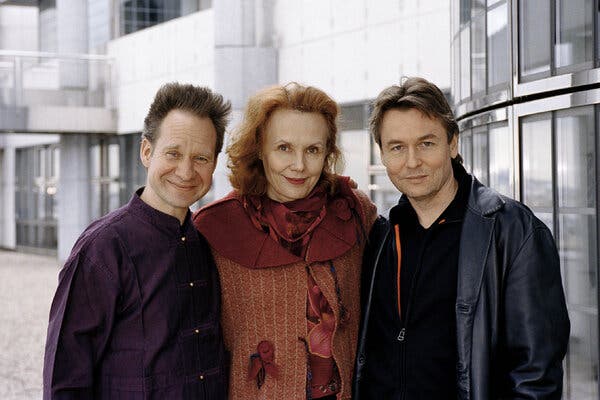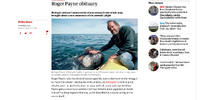Paris France Acclaimed composer Kaija Saariaho dies at age 70 of a brain tumor.
She brought new textures to modernist music, sometimes using electronics, and became the first female composer to have two operas staged by the Met.

www.nytimes.com
Kaija Saariaho, a Finnish composer who was brought up in the male-dominated world of high modernism and who forged an artistic identity wholly her own as she rose to the top ranks of contemporary classical music, died on Friday at her home in Paris. She was 70.
The cause was brain cancer, said her publisher, Chester Music. Her final piece, a trumpet concerto, will premiere in August with the Finnish Radio Symphony Orchestra, conducted by
Susanna Mälkki, a leading interpreter of Ms. Saariaho’s music.
Ms. Saariaho was always “upset by being called a female composer,” the director Peter Sellars said, but her work “has such deep meaning for so many people who did not hear their voices in classical music.”
Mr. Sellars, a longtime collaborator who is staging her 2006 opera, “Adriana Mater,”
at the San Francisco Symphony next week, added: “It’s a feminine voice that we never had before. Kaija literally opened the other half of the world to classical music.”
Her style could be difficult to categorize. What evolved, through experiments with timbre and electronics, was a galaxy of singular sound worlds both vivid and mysterious, with appeal for connoisseurs and newcomers alike.
“She managed to do what many composers of her generation were unsuccessful at doing,” said Peter Gelb, the Metropolitan Opera’s general manager. “The work she created was entirely original and accessible.”
Throughout her career, Ms. Saariaho didn’t work in explicitly traditional forms, but she wrote for many musical configurations: solo instrument and chamber ensemble, symphony orchestra and opera. And while composing, she told the biographer Pirkko Moisala, she viewed herself as a socially conscious organic farmer.
“The task of today’s artist is to nurture with spiritually rich art,” she said. “To provide new spiritual dimensions. To express with greater richness, which does not always mean more complexity but with greater delicacy.”
Kaija Anneli Saariaho was born on Oct. 14, 1952, in Helsinki, the eldest of three children of Launo Laakkonen, an entrepreneur, and Tuovi Laakkonen. Her family was not musical, but she began to study violin at 6 and piano at 8; her mother later told her that at night she would ask for someone to “turn the pillow off” because she could hear so much music coming from it that she couldn’t sleep.
At 10 she began to compose, but in secret — because in her mind, composers were men. She was totally unlike what she thought a composer should be, she told Mr. Moisala, “both externally and internally.”
“The things you read about great composers as a child — and, in addition, the image one has about Sibelius,” she said, referring to Finland’s most treasured composer. “These were the thoughts which paralyzed me.”
After completing her secondary education at the Rudolf Steiner School in Helsinki, she enrolled at the Helsinki Conservatory of Music, as well as the Institute of Industrial Arts, where she was a graphic design student.
She married Markku Saariaho, but divorce followed quickly, and in 1972 she moved in with a new partner, the visual artist Olli Lyytikäinen. They lived together for seven years, during which their Helsinki apartment became a gathering place for young, like-minded people.
Ms. Saariaho with the director Peter Sellars, left, and the conductor Esa-Pekka Salonen in 2006 at the Opera Bastille in Paris, where they were staging the premiere of “Adriana Mater.” Credit...Eric Mahoudeau
Eventually, Ms. Saariaho left the graphic design program to study composition with Paavo Heininen at the storied Sibelius Academy.
There, her social circle included musicians who are now luminaries, including
Magnus Lindberg and Esa-Pekka Salonen. Together, they formed the group Korvat Auki! (Ears Open!) to disseminate modern music. “We did concerts in schools and hospitals and so on — outside gas stations in the middle of nowhere, in snowbanks,” Mr. Salonen said.
Ms. Saariaho continued her studies at the Freiburg Conservatory of Music in Germany, while also taking summer courses in the modernist hotbed of Darmstadt. When she finished, in 1982, she left for Paris, where she took courses at IRCAM, the avant-garde institute founded by Pierre Boulez.
Ms. Saariaho’s generation of composers, raised on Boulez’s brand of modernism, was also seeking a way out of it. In Darmstadt, she was attracted to spectralism — which departed from serialism by approaching composition with a focus on the nature of sound, rather than on mathematical systems — and learned the music of Gérard Grisey and Tristan Murail.
Ms. Saariaho’s earliest published music reflects her education and interests, like “Verblendungen” (1984), a work of rich, shifting colors in which a live ensemble and tape begin in timbral conflict with each other before shaping a new, distinct sound together.
Her aesthetic of this era, Mr. Salonen said, has a “very particular kind of magical beauty and kind of emotional language which conveys very deep, very strong emotions.” He added that she “brought elements back to contemporary music that had been, if not missing, at least hidden.”
“She brought back deep emotion and immediate emotion to Western art music without cheapening anything,” Mr. Salonen said.
In 1984, Ms. Saariaho married the French composer Jean-Baptiste Barrière, who survives her, along with their two children, the writer-director Aleksi Barrière and the musician Aliisa Neige Barrière. Ms. Saariaho settled in Paris, though she maintained a hold on her Finnish identity, describing herself as a Finn living in France.
“Living and composing in a city which constantly remains strange to me,” she told Mr. Moisala, “is the key to an existence which allows me to detach myself from reality and get into the abstract language of music.”
Ms. Saariaho was in a constant state of change and development as an artist. She tinkered with the possibilities of electronics and computers and brought an explorer’s spirit to testing the different worlds of instrumental timbres. She adored the human voice, she once said in an interview with her publisher, calling it “the richest form of expression.” But early in her career, she struggled to find what exactly she wanted to do with it.
Ms. Saariaho, who hadn’t had the desire to write an opera, changed her mind after seeing Mr. Sellars’s 1992 staging of Messiaen’s “St. Francois d’Assise” at the Salzburg Festival in Austria. That experience, Ms. Saariaho told her publisher, “opened my mind to what can be done by telling a story with music,” and led to a series of collaborations with the soprano Dawn Upshaw, one of its stars.
And so Ms. Saariaho entered the 21st century with the premiere of her first opera, “L’Amour de Loin,” which was widely celebrated as a masterpiece and considerably raised her international profile. A dreamy, quietly immense retelling of the medieval troubadour Jaufré Rudel’s “La Vida Breve,” it featured a libretto by Amin Maalouf and brought back some of that “St. Francois d’Assise” team, including Mr. Sellars and Ms. Upshaw. Anthony Tommasini of The New York Times described it as “an often transfixing and utterly distinguished work.”
In later years, she synthesized her earlier developments, deploying elements of her style to judicious, seemingly inevitable effect. Her output, Mr. Salonen said, “can be seen as a vast forest where all these plants and trees grow, and they’re in sort of a symbiotic relationship with each other. But it’s the same forest.”
She wrote works that could broadly be described as symphonies or concertos. But she repeatedly said that in her scores she was trying to find an organic meeting place between material and form. “Every piece of music,” she once told her publisher, “must live its own life because each one is utterly its own.”
In Finland, where composers are held in high regard, Ms. Saariaho was “somebody who would be recognized on the streets,” Mr. Salonen said.
“People would go and talk to her and thank her for the music,” he added. “And taxi drivers would tell her that they loved her opera. It was on that level.”
With arched eyebrows and a mane of red hair, Ms. Saariaho was easy to spot. On visits to New York, she could be seen speaking with fans who had stopped her in the lobby or the aisles of the Met, where “L’Amour de Loin”
was directed by Robert Lepage in 2016, only the second opera by a female composer to be staged there, and the first since 1903.
It became the best known of her dramatic works, but more followed, each distinct from its predecessor.
“Adriana Mater,” with a libretto by Mr. Maalouf, was ripped from the headlines, evoking the Bosnian war of the 1990s; “Only the Sound Remains,” from 2015, was smaller in scale, inspired by Ezra Pound and Noh theater. A piece about the philosopher Simone Weil, the 2006 oratorio “La Passion de Simone,” was in the vein of Bach’s famous Passions.
“I think both Bach and Kaija were creating music that is about light that shines out of darkness,” said Mr. Sellars, who staged “Passion.” “The music understands the darkness, and at the same time the darkness makes you begin to understand and recognize the light.”
Ms. Saariaho’s greatest triumph since “L’Amour” came in 2021, with the premiere of “Innocence” at the Aix-en-Provence Festival in France. The piece was one of her most ambitious, a mosaiclike thriller of trauma and memory scored for a full orchestra, a chorus and a cast of 13 performers, with a smooth blend of styles like elevated, quasi-musical speech and folk.
“This,”
Zachary Woolfe wrote of that opera in The Times, “is undoubtedly the work of a mature master, in such full command of her resources that she can focus simply on telling a story and illuminating characters.”
“Innocence” will travel to the Met in the 2025-26 season — at which point Ms. Saariaho will become the rare contemporary composer, and the only woman, to have more than one work staged there. And, in a testament to the staying power of her music, other directors have taken up her older operas.
“You don’t finish with these works,” said Mr. Sellars, who is revisiting “Adriana Mater.” “That’s the way it is with the works of the great composers. You return to them all your life, and these pieces just get more relevant and more necessary as time goes by.”
Javier C. Hernández contributed reporting.
A correction was made on
June 2, 2023
:
An earlier version of this article misspelled the surname of the subject of the medieval tale “La Vida Breve.” He is Jaufré Rudel, not Dudel.









